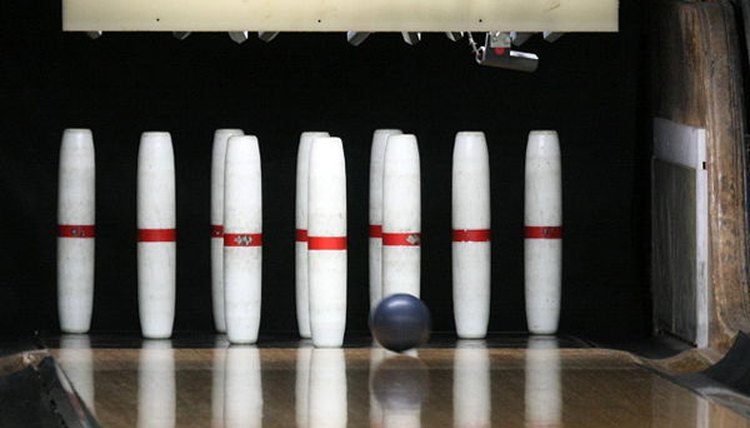Bowling extends far beyond the realm of ten-pin. If you believe otherwise, allow me to correct that misconception.
There are various iterations of bowling, and among them is a particularly unique one that is predominantly enjoyed in New England as well as the Canadian Maritime Provinces.
Candlepin bowling, with its origins dating back to 1880, continues to be enjoyed to this day. It offers a captivating alternative to traditional ten-pin bowling, provided you have access to a lane.
This guide delves into the fascinating origins of candlepin bowling and explores its geographical presence as a distinct variation of the sport.

We will explore the rules of candlepin bowling, the distinctions between ten-pin and candlepin bowling, and delve into the origins of candlepin bowling pins.
In the discussion, we aim to enhance the writing quality, optimize word choice, and improve structure, readability, and eloquence, all while preserving the original meaning.
Contents
The Origin Of Candlepin Bowling
Candlepin bowling, tracing its roots back to Worcester, Massachusetts, has its origins accredited by the International Candlepin Bowling Association.
In 1880, the first game was played at this location, which was believed to have been developed by Justin White, the proprietor of a bowling and billiards establishment.
Although White is often credited with the development of the game, there are claims that John J. Monsey, also from Worcester, was the formal inventor.
Monsey was not only an avid billiards player, but he also had a notable involvement in candlepin bowling to standardize the game itself.
In 1906, Monsey was credited with establishing the National Duckpin and Candlepin Congress. This organization took on the important role of regulating various aspects of the game, including the specifications for pin shape and size, ball size, and the characterization of lane surfaces.
Additionally, the organization played a crucial role in fostering the growth of leagues and other competitive events, aiding in their development and establishment.
Where Candlepin Bowling Is Played
If you’re unfamiliar with the game of candlepin bowling, it’s likely because you haven’t been in the regions where it is commonly played.
This game is unique to the New England region and the Canadian Maritime Provinces. It remains relatively unknown and is rarely played outside these areas.
The Rules Of Candlepin Bowling
Candlepin bowling, much like any other bowling game, can be easily understood without the need for an instruction manual.
In the game of bowling, a ball is carefully rolled down a lane to knock over ten pins arranged in the shape of a pyramid. Each player gets three rolls per turn, and the pins that are knocked down remain down until the completion of the turn.
You still receive a strike for knocking down all ten pins, although it does appear more challenging when they remain knocked over on the lane.
A strike results in ten points, which are then added to the count for the next two rolls.
A spare can still occur if all ten pins are knocked down after two balls. However, if it takes three rolls to knock them all down, the score is simply ten. In New England, this is referred to as a “ten-box”.
The Differences Between Ten-Pin And Candlepin Bowling
Before delving into the distinctions, it’s important to note a clear and simple similarity between ten-pin and candlepin bowling.
In both variations of bowling, players aim to roll balls down a lane to knock down as many pins as they can.
Now that we’ve covered that, let’s explore the distinctive characteristics that set the two versions of bowling apart and delve into them further.
Candlepin bowling is often perceived as more archaic compared to ten-pin bowling, and this perception is justified.
Firstly, the pinsetter is not automatically triggered after each frame as one might expect. Instead, it requires a manual reset using a designated button. Yes, you heard it right – this process involves someone physically pushing a button.
In contrast to ten-pin bowling, the fallen pins persist on the frame between rolls, posing a potentially greater challenge to scoring points. Navigating through the “dead wood” of these fallen pins becomes a requisite skill to succeed in the game.
Due to their slender build, the pins in this game are thinner compared to those in ten-pin bowling. As a result, you may encounter a greater challenge when attempting to knock them down.
The balls utilized in candlepin bowling lack finger holes, are lighter in weight, and have a relatively smaller size compared to those used in other bowling variations.
In candlepin bowling, you are granted an additional opportunity with three balls per frame, deviating from the conventional two balls in ten-pin bowling.
How The Pins Developed
Initially, the pins resembled dowels – cylindrical rods, each measuring an inch in thickness. Their resemblance to candles gave birth to the name “candlepins”. Let us preserve the essence of their origin while enhancing the quality of expression, structure, and eloquence.
There was a debate regarding the thickness of the pins, sparked by a newspaper article published in 1888, which claimed that the pins measured two inches in thickness.
The candlepin has evolved to have a precise thickness of 2 15/16 inches, equivalent to 74.6 mm.
In the late 1960s, a significant transformation took place as the traditional wooden candlepins were replaced with modern plastic ones. This transition potentially prompted numerous players to reassess and adjust their strategies accordingly.
Frequently Asked Questions
What is the highest officially recorded score in the sport of candlepin bowling?
The score of 245, reportedly achieved at least twice in official records, stands as a testament to its remarkable accomplishment.
The initial achievement occurred in 1984 when Ralph Semb, located in Erving, Massachusetts, accomplished this feat. Subsequently, on May 13, 2011, in Haverhill, Massachusetts, Chris Sargent became the second individual to achieve the same accomplishment.
Are Duckpin Bowling and Candlepin Bowling Similar?
Duckpin bowling and candlepin bowling share some similarities in their gameplay and rules.
Duckpin bowling is primarily popular in a few states including Maryland, Rhode Island, and Connecticut. These states seem to have the highest concentration of venues offering this unique bowling experience.
However, candlepin bowling is exclusively played in New England and the Canadian Maritime Provinces, limiting its reach beyond these regions.
In both bowling games, every player is allotted three opportunities to roll the ball. It’s worth noting that the ball used in these games does not feature any finger holes.
In Conclusion
Candlepin bowling offers a unique twist to the traditional game, making it easily accessible for beginners. With ten pins to topple, achieving a strike by knocking them all down with the first roll adds excitement to the experience.
The game of bowling can be quite intriguing in its mechanics. As the ball hurtles down the lane, the fallen pins remain scattered, creating a visual representation of the player’s success or missed opportunity.
It’s important to note that even a gutter ball can lead to a foul if it strikes one of the standing pins. This nuanced aspect of the game adds an element of surprise and strategy to each throw, making bowling a truly captivating sport.
The design of the pins could also play a crucial role in determining the level of enjoyment in this particular variation of bowling. It ultimately depends on how much importance a player places on scoring points.


Allow me to introduce myself – I’m Eric Wilkinson, a true bowling aficionado. The world of bowling culture has always fascinated me, and I’ve made the exciting decision to share my passion through writing. As I embark on this blogging adventure, my goal is to provide fellow enthusiasts with valuable insights, tips, and captivating stories. Through my blog, I hope to ignite a deeper appreciation for the sport and foster a sense of community among fellow bowlers. Join me on this thrilling journey as we explore the vibrant world of bowling together.
